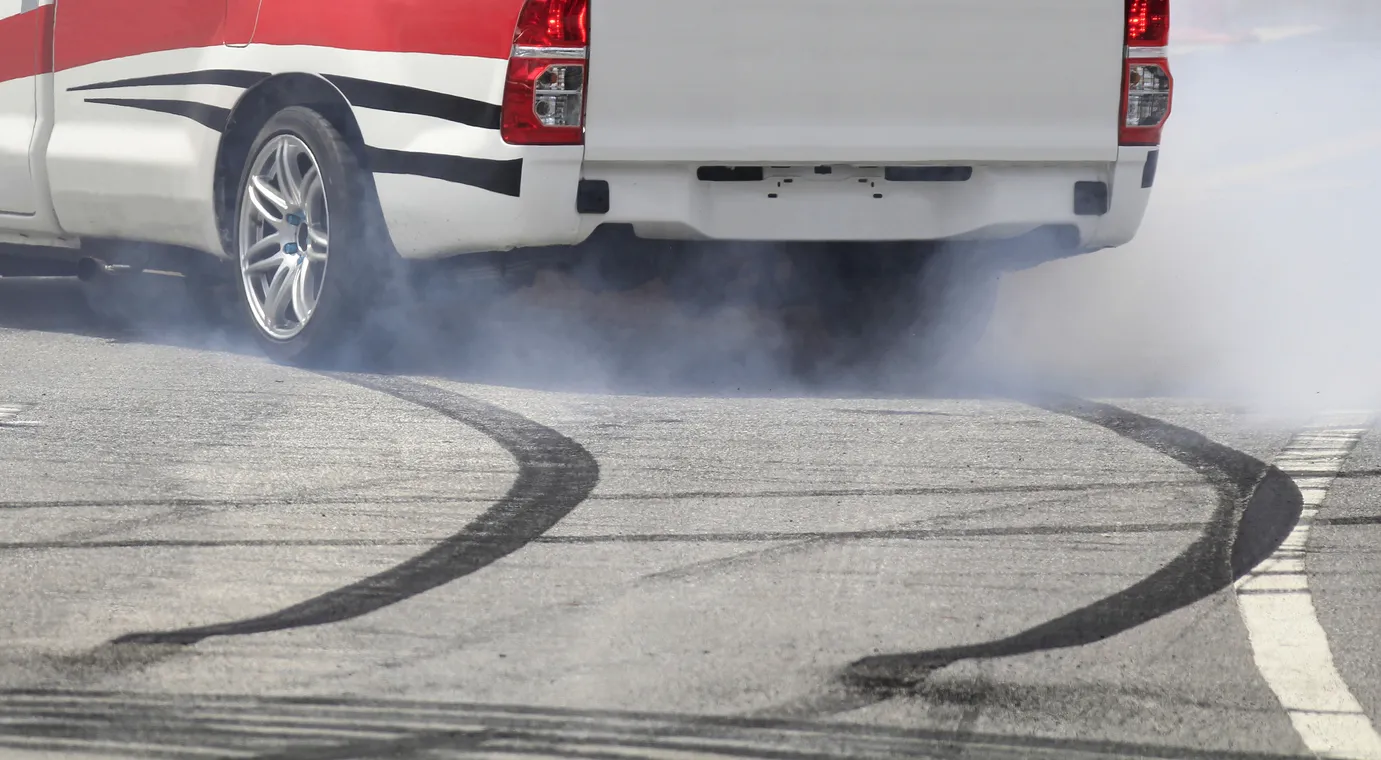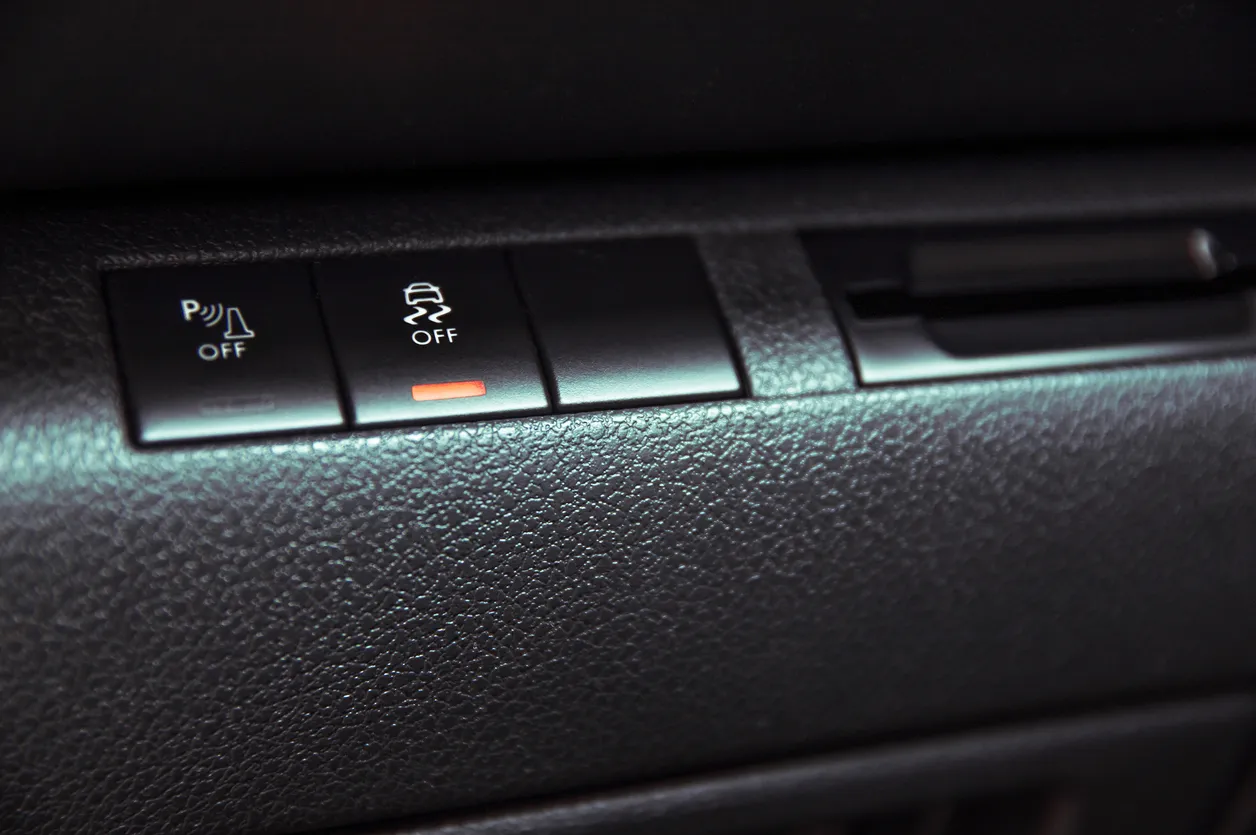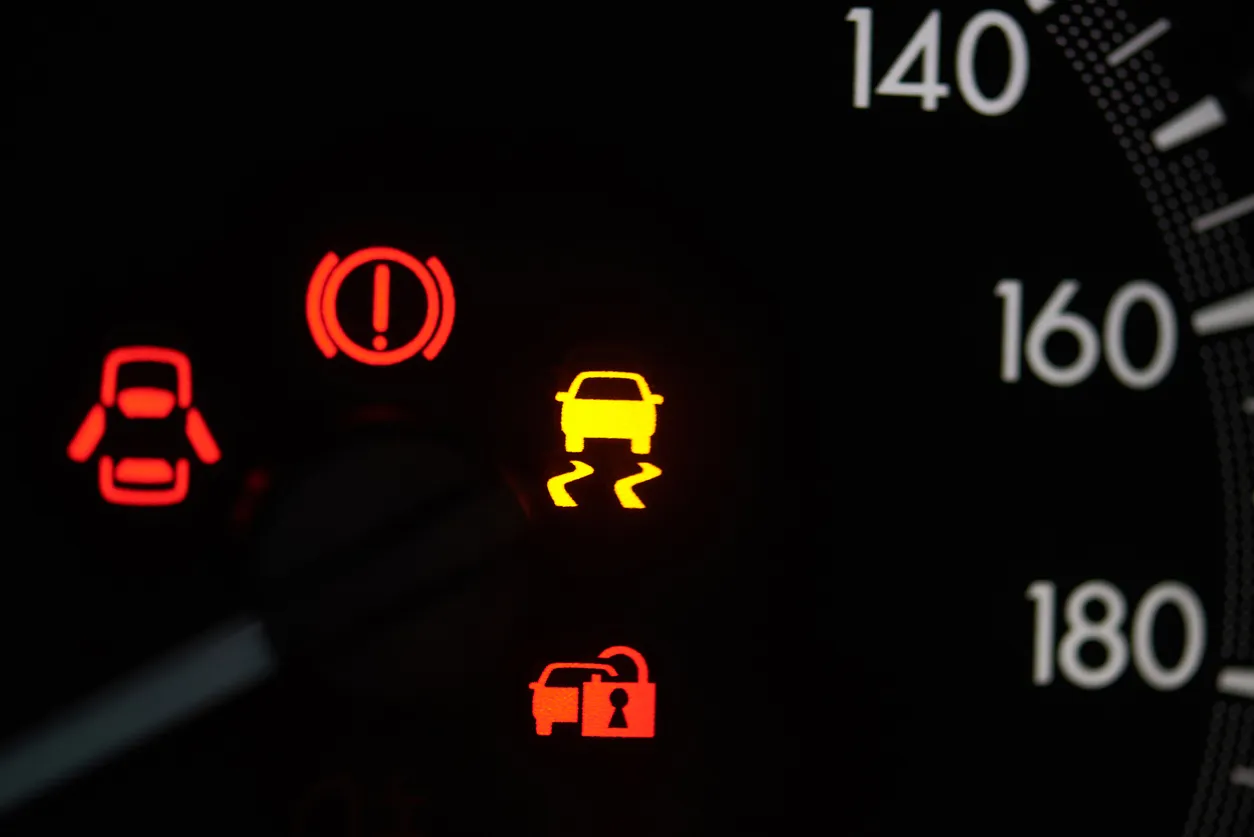Traction Control System (TCS): How It Works and When To Use It

Most modern vehicles are designed with a traction control system today. This specialized system of sensors determines how your vehicle's wheels are spinning in relation to the speed of your vehicle. This intelligent safety system can predict the precise moment when any of the tires around your vehicle are about to lose traction completely. At that moment, the vehicle's traction control system kicks in and keeps you safe by preventing the tire from skidding. The system uses a variety of specialized sensors to achieve its results, and it pairs well with the ESC and ABS systems to keep you safe in a wide range of different driving conditions. If your vehicle doesn't have traction control, you'll find it more difficult to drive in slippery conditions and you will be more prone to losing traction and driving off the road.
What is Traction Control?
Traction Control is a special safety technology that's included in most cars and trucks today. The system helps reduce wheel slipping while driving over difficult terrain or during poor weather conditions. The traction control system detects the speed of each wheel and uses that information to determine when a wheel is slipping. As soon as a slip is detected, the vehicle reduces power to the wheel to reduce the loss of traction.
The worst thing you can do when your tire is spinning out is to accelerate, and modern traction control systems help you avoid making that mistake. The systems automatically decelerate the tires that aren't gripping well, and that slight change helps you maintain effective control over your ride because you won't fully lose traction. Many drivers panic when they begin losing control of a vehicle, and a traction control system helps prevent the issue from occurring in the first place. This is why it's an important tool that can keep you safe while driving on slippery roads.
A Quick Guide to Traction Control:
- Detects when tires are about to slip
- Uses yaw sensors to see wheel speeds
- Reduces power to the slipping tire
- Separate from ESC and ABS systems
- A button can turn traction control on and off in most vehicles
Should Traction Control Be On or Off?
 Traction control should be left on nearly all the time that you're driving your vehicle. The only time that it's beneficial to turn off traction control is when your car is stuck in the snow, ice, sand, or mud. In those situations, you are making it more difficult to get unstuck when you leave the traction control system engaged.
Traction control should be left on nearly all the time that you're driving your vehicle. The only time that it's beneficial to turn off traction control is when your car is stuck in the snow, ice, sand, or mud. In those situations, you are making it more difficult to get unstuck when you leave the traction control system engaged.
Some people choose to turn their traction control off in order to perform power slides or other specialized driving maneuvers, but this is dangerous and only advisable if you are a professional with training and you know what you're doing. The average person should leave the traction control on at all times, and if you aren't sure whether the system is helping your or not, you should trust in the technology that's so helpful that it's now standard on most vehicles on the road.
Should You Turn Off Traction Control in Snow?
Some people believe they are safer when driving in the snow without traction control turned on. There is a common misconception that the traction control system can lead you to make driving mistakes or to lose control more frequently, but that's the opposite of what this system does for you. You should keep traction control on at all times while you're driving, but it's especially important when driving in snowy conditions where your tires are more likely to slip than in any other driving condition. The only time you should consider turning off your traction control because of snow is when you're stuck in an unmoving position in the snow. If you can't seem to get out of the snow that you're sitting in, turning off the traction control system may help you gain your grip and get moving.
Is Traction Control Standard On All Vehicles?
You're likely to see a button for traction control on nearly every vehicle you drive today. That's because the technology became standard on all vehicles after 2012. That means that any car or truck you purchase after 2012 is likely to be equipped with a traction control system. The system is so standardized because it improves traction in most driving situations when a low level of grip is likely. While driving in snow, on wet roads, or on dirt roads, traction control reduces how much your tires spin and helps you remain in control throughout the driving experience.
What Does the Traction Control Light Mean?
 If you see the T/C light on the dashboard of your vehicle, there are a few possible reasons for this. The first is because you accidentally disengaged your traction control system, and it's turned off at the moment. This issue can be resolved by pressing the traction control button on your vehicle and engaging the system once again. The other reason is that your traction control system is malfunctioning. The system depends on a series of wheel speed sensors as well as some other specialized components to function. If any of those parts stop working properly, the whole system stops working as well.
If you see the T/C light on the dashboard of your vehicle, there are a few possible reasons for this. The first is because you accidentally disengaged your traction control system, and it's turned off at the moment. This issue can be resolved by pressing the traction control button on your vehicle and engaging the system once again. The other reason is that your traction control system is malfunctioning. The system depends on a series of wheel speed sensors as well as some other specialized components to function. If any of those parts stop working properly, the whole system stops working as well.
If you notice the traction control light, you should immediately try and turn your TCS back on as soon as possible. If you can't turn the system back on, you likely have an error with one of the components in the system, and you will have to have your vehicle repaired to resolve the issue.
If you're considering used vehicles older than 2012, you should look closely to see if traction control is available on the vehicle. Older vehicles have fewer safety features, which is why it's so important to look over the specifications of the vehicle to help you avoid purchasing a vehicle that doesn't meet your needs properly. You should also look over a car history report from GoodCar for any signs of accidents or poor maintenance to help you avoid damaged or worn vehicles before making a purchase.
Can The Traction Control Light Be Repaired?
If your traction control light comes on, the first thing you should do is locate the traction control button and make sure it isn't in the off position. Once you do that, you can reset your vehicle to see if the traction control light remains on. If the light is still on after restarting your vehicle and pressing the button, you likely have an issue with one of your vehicle's sensors. Talk with a local mechanic about the error light and what it will take to fix the issue. The light can be repaired, but it will take some work and possibly replacing one or more sensors to resolve the issue.
Traction control is just one of the major safety systems installed on modern vehicles that helps keep drivers safe today. If you're going to drive regularly, you should keep your traction control system active at all times to avoid any potential issues.
FREE Vehicle Search
- Accidents
- Problem Checks
- Title Records
- Recalls
- Values
- Specs
-
InfoPay, Inc. (dba GoodCar) is an Approved NMVTIS Data Provider
-
-

















































